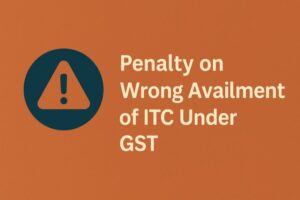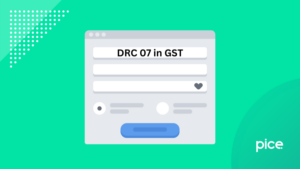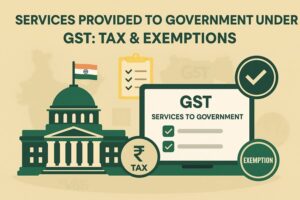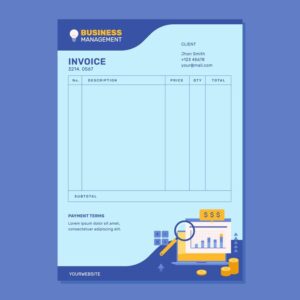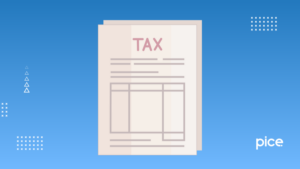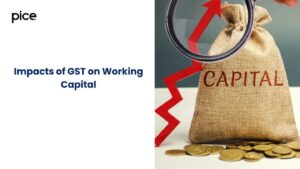Input Tax Credit under GST – Time Limit to Claim ITC
- 31 Aug 24
- 13 mins
Input Tax Credit under GST – Time Limit to Claim ITC
- Understanding Input Tax Credit (ITC)
- Requirements for Claiming Input Tax Credit under GST
- Deadline for Claiming Input Tax Credit under GST
- Items Excluded from ITC Eligibility
- Reversal of Input Tax Credit (ITC)
- How to Claim Credit When Tax Has Been Paid Under Reverse Charge Mechanism (RCM)?
- Relevant Provisions for Availing ITC
- Rules for Setting Off Input Tax Credit
- GST Refund Process for Input Tax Credit
- Required Documentation for ITC Claims
- Receipt of Goods
- Input Tax Credit on Capital Goods
- The Bottom Line
Key Takeaways
- Input Tax Credit (ITC) allows GST-registered taxpayers to reduce their output tax liability by claiming credit on taxes paid for business purchases.
- To claim ITC under GST, taxpayers must meet specific conditions, such as holding a valid invoice, receiving the goods, and filing timely GST returns.
- ITC claims must be made before the deadline of 30th November of the following financial year or the date of filing the annual return, whichever is earlier.
- Certain items like motor vehicles for personal use, food services, and goods for personal consumption are excluded from ITC eligibility under Section 17(5) of the CGST Act.
- Reversal of ITC is required if the payment to the supplier is not made within 180 days or if the goods and services are used for exempted or non-business purposes.
Input tax credit (ITC) helps reduce the GST liability of a taxpayer. As a registered taxpayer can claim ITC on the purchase of goods, the tax burden on the taxpayer is reduced with ITC claims. Thus, a GST-registered taxpayer can easily reduce their output tax liability with ITC.
Learn about what an input tax credit is, the time limit for claiming ITC under GST, reversal of ITC, and refund of GST under GST here. Further, learn about the documents required for claiming ITC and the conditions in which you can claim input tax credit to reduce your tax liability.
Understanding Input Tax Credit (ITC)
A registered or taxable person has to pay goods and services tax (GST) on the purchase of goods and services for the furtherance of business. This GST paid is known as input tax credit or ITC. It reduces the tax liability on output tax for the registered person.
Consider the following example to understand the concept of ITC. For instance, if you are a manufacturer with tax payable on output or finished goods (tax on sales) amounting to ₹400 and tax paid on input or purchases is ₹300, then you can claim ITC of ₹300. Further, this will reduce your tax liability by ₹400 - ₹300 = ₹100.
You can avail the ITC benefits if you are covered under the GST Act. If you are a supplier, manufacturer, agent e-commerce operator, aggregator or a person registered under GST, you can be eligible to claim input tax credit for tax paid on your purchases.
Requirements for Claiming Input Tax Credit under GST
Section 16 of the CGST Act presents the requirements or conditions for claiming GST Input Tax Credit. Here are the requirements for you:
- The goods and services should be used for non-business (personal) purposes.
- A registered or taxable person should have the relevant invoice, debit note, credit note issued by ISD (Input Service Distributor) or any other document, supporting proof of payment for the purchases.
- The benefit of provisional ITC claims has not been available anymore since January 2022. As a result, the ITC that reflects on GSTR-3B is the actual ITC. Taxpayers cannot claim 5% of the total ITC as provisional in form GSTR-2B.
- A buyer should receive the goods sent by a supplier. For instance, to claim ITC for January, a taxpayer needs to receive the goods before the due date for claims in January.
- The buyer needs to furnish GST returns in Form GSTR-3B.
- If you receive goods in lots or instalments, you can claim ITC after receiving the last lot or instalment.
- As a buyer, you need to ensure the payment of invoice amount to the supplier within 180 days of invoice issuance.
- If you claim depreciation on the tax component of capital goods purchased, you cannot claim ITC on the same.
- You need to claim ITC within the time limit in a financial year (the time limit explanation is available in the next section).
- Common credit of ITC needs to be identified and separated for exempt supplies or taxable supplies and business and non-business activities.
- You cannot claim ITC for ineligible items under Section 17(5) of the CGST Act.
- A person registered under the GST composition scheme cannot claim input tax credit.
Deadline for Claiming Input Tax Credit under GST

There is a specific deadline or time limit for claiming ITC under GST. You can claim input tax credit under GST on the earlier of the following dates:
- 30th November of the following financial year
- The date of filing returns (annual return) in form GSTR-9 during the same financial year
For instance, if a buyer wants to claim ITC under GST for the financial year 2021-22, he or she has to do it before the last date of filing GSTR for the financial year 2021-22 or 30th November 2022, whichever is earlier. To avoid discrepancies, ensure you adhere to the time limit for claiming ITC under GST.
💡 If you want to pay your GST with Credit Card, then download Pice Business Payment App. Pice is the one stop app for all paying all your business expenses.
Items Excluded from ITC Eligibility
There are several items excluded from ITC eligibility. Here is the list of items excluded from eligibility:
- Motor vehicles with a seating capacity of not more than 13 persons, agencies that transport goods, vessels and aircraft. However, if motor vehicles are used for selling purposes, transportation of passengers and goods and conveyance for training purposes are included.
- General insurance services are one of the categories of services that are excluded. Further, maintenance and repair of motor vehicles, aircraft and vessels are excluded.
- Food and beverages, outdoor catering services, beauty treatment, cosmetic and plastic surgery, health services
- Club membership fees, health and fitness centres
- Cab rental services, health insurance and life insurance are excluded unless the employer mandatorily has to provide them to employees
- Home travel concession and travel benefits for vacation
- Works contract services for the construction of immovable property
- Goods and services used for the construction of immovable property
- Goods and services for which you paid taxes under the composite supply scheme
- The goods and services that you use for personal consumption
- Goods and services that a non-resident taxable person receives unless he or she imports them
- Lost, stolen, destroyed, disposed of, and written off goods followed by gifts and free samples
- Tax paid for non-payment or short tax payment, excessive refund, fraud, suppression of facts, willful misstatements and confiscation
- Standalone restaurants charging 5% GST
- Expenses pertaining to corporate social responsibility or CSR
Reversal of Input Tax Credit (ITC)
Reversal of Input tax credit is subject to certain conditions. Here are the conditions that facilitate the reversal of ITC:
- As a purchaser, you should pay the supplier within 180 days of invoice issuance.
- You should not use goods and services, be they inputs or capital goods, for non-business purposes or personal use. Goods are services including inputs and capital goods used for business purposes are eligible for input tax credit reversal.
- A buyer should not use inputs and capital goods to provide exempt supplies or produce goods and services for exempted supplies.
- There should be credit notes issued by the seller to the input service distributor (ISD).
- When the reversed input tax credit is less than required
- Sale of capital goods or plant and machinery on which you have claimed ITC earlier
- Supplies that are not eligible under Section 17(5) of the Act
- Transition from a registered regular dealer to a composite dealer
The recipient needs to furnish a reversed input tax credit with respect to Form GSTR-2. Further, the reversed ITC adds up to the total output tax liability.
Where Input Tax Credit Is Reversed
- The reversal amount gets added to the output tax liability in the month of reversal.
- Interest is paid from the date of availing credit to the date when the amount gets reversed and paid.
- There is no time limit applicable for reclaiming the credit reversed.
How to Claim Credit When Tax Has Been Paid Under Reverse Charge Mechanism (RCM)?
If tax has been paid under RCM, you can avail ITC in the month same as the payment ensuring the following conditions:
- Liability needs to be discharged through cash.
- You should use the goods or services solely for business purposes and not for any personal use.
- There needs to be a self-invoicing done as an unregistered supplier cannot issue a tax invoice.
Relevant Provisions for Availing ITC
Under Section 16(2)(c) of the CGST Act, a registered person cannot claim ITC unless he or she has paid taxes to the Government, either in cash or through ITC utilisation. However, Section 41(2) delineates repercussions for the availed credit when there is a failure of the supplier to pay tax. The registered taxpayer needs to reverse the credit and pay any accrued interest.
Section 41(2) ensures that the supplier pays all outstanding taxes. It allows the re-availing of previously reversed credit. This ensures tax neutrality, thereby maintaining the efficiency of the ITC mechanism.
Section 41 ensures a seamless flow of the ITC mechanism with outlines on credit availing, reversal and re-availing. This further ensures payment of taxes by the supplier as well as the recipient within the specific time frame.
Rules for Setting Off Input Tax Credit
With effect from 1st July 2019, there has been an updated system of ITC utilisation on the GSTN portal. Here are the updated fundamental rules that you need to know:
- You should fully utilise IGST first.
- In the case of CGST liability, you must first use CGST credit and then IGST credit. However, ensure that no IGST credits are pending.
- For SGST liability, you should utilise SGST credit first and then IGST credit. However, ensure that no IGST credit is pending beforehand.
- You cannot use CGST credit against setting off SGST liability or SGST credit against CGST liability.
- The aim of setting off ITC against tax liability is to minimise tax pay-out after complying with all provisions of the act.
The following table illustrates the components of IGST credit, CGST credit and SGST credit:
| IGST Credit | CGST Credit | SGST Credit |
|---|---|---|
| IGST Liability CGST liability SGST/UTGST liability | CGST Liability IGST liability | SGST/UTGST liability IGST liability |
GST Refund Process for Input Tax Credit
There are three instances in which a taxpayer or a registered person can claim a GST refund under ITC in their electronic credit or cash ledger for a tax period. Here are the three instances for you:
- Refund of unutilised ITC for exports without paying integrated tax
- Unutilised ITC refund for goods or services sent to SEZ or special economic zone units or developers without paying integrated taxes.
- ITC refund for inverted tax structure, in the case where ITC is more than the outward tax liability
Required Documentation for ITC Claims
You need certain documents to claim the input tax credit. Here is the list of documents you need to claim ITC:
- You need to have the tax invoice or original invoice that the supplier issues as the note for supply.
- The recipient should have the debit note that the supplier issues.
- Bill of entry
- Invoices issued under special circumstances such as bill of supply when the invoice amount is less than ₹200 or reverse charge mechanism applies.
- Credit note that the input service distributor or ISD issues
- Bill of supply that suppliers issue for goods and services
Receipt of Goods
There is a rule that guides the process of receipt of goods. The rule highlights that the recipient must receive the goods or services within 180 days from the date of invoice issuance. For instance, if you receive an invoice in June 2022, you must receive the goods or services within 180 days from June 2022.
Input Tax Credit on Capital Goods
Four types of capital goods prevail in businesses. The following table highlights how ITC or input tax credit works for each type of capital goods:
| Type of Capital Goods | How ITC Works |
|---|---|
| Capital goods utilised for personal use | No ITC available |
| Capital goods used for exempted supply | No ITC available |
| Capital goods for normal taxable sales | ITC available as per usual norms |
| Capital goods utilised for personal use, exempted supply and normal sales | ITC applies proportionately |
The Bottom Line
Now that you know the documents required and conditions for claiming ITC ensure you meet the conditions to reduce your tax liability. Further, ensure that you adhere to the time limit for claiming ITC under GST for a hassle-free ITC claim journey. You need to claim ITC on an earlier date for the two options available. Ensure you do not miss the date for claiming ITC.
 By
By 





